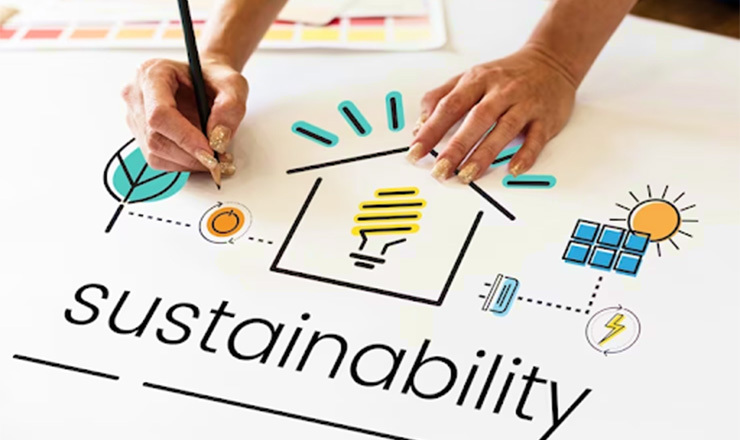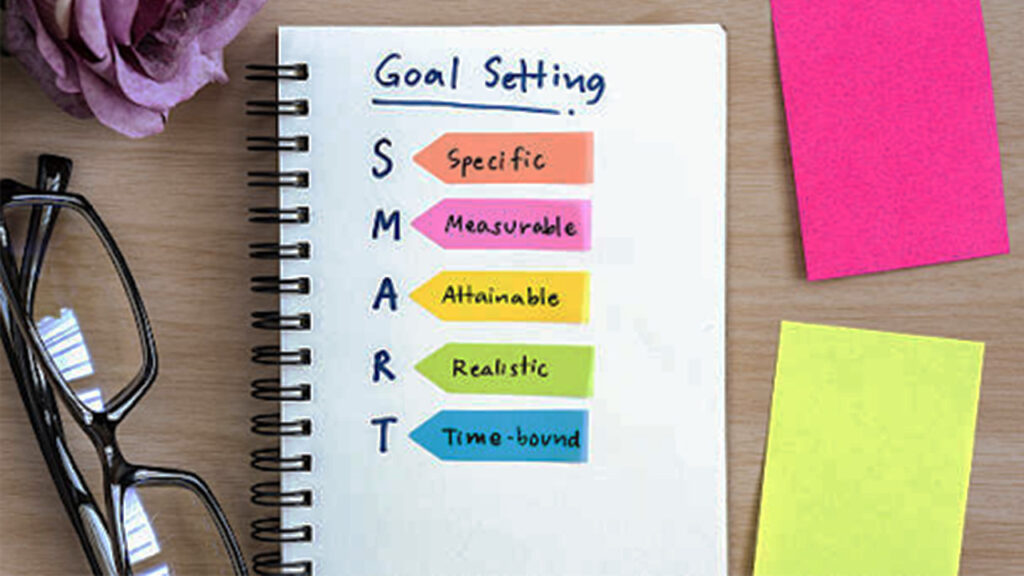How To Grow Your Business Sustainably | Tips & Tricks
In today’s competitive business world, growing your business sustainably is more important than ever. Sustainable growth involves expanding your business in a profitable, responsible, and impactful way in the long run.
While it may seem daunting, there are several strategies that entrepreneurs can employ to achieve sustainable growth.
One of the keys to achieving sustainable growth is ensuring that your business finances are healthy. One financing option that entrepreneurs may consider is a secured credit card. Entrepreneurs can build or rebuild their credit by using a secured credit card while controlling spending.
Apart from financing, businesses can take other critical steps to grow sustainably. In this blog, we will explore those steps and give you some tips for growing your business sustainably.
By employing the following strategies, businesses can grow sustainably, build their brand, and positively impact their community.
Let’s start!
Table of Contents
1. Focus on Customer Satisfaction
The success of any business is heavily reliant on its customers. If you want to grow your business sustainably, focusing on customer satisfaction is crucial.
The following are some ways to accomplish this:
- Provide high-quality products or services
- Embrace transparency and honesty in your business practices
- Target the right audience with the right message
- Engage with your customers regularly
- Use customer feedback to improve your products or services
- Develop a customer-centric culture within your company
- Offer excellent customer service and support
- Reward customer loyalty through incentives and rewards programs
- Continuously evaluate your customer satisfaction metrics
This will help you improve your products or services and ensure that your customers are happy.
2. Implement Sustainable Practices

Sustainable practices are those that promote the responsible use of resources, minimize waste, and reduce the impact on the environment. Implementing sustainable practices in your business can help you reduce costs and improve your brand reputation.
Examples of sustainable practices include:
- Recycling
- Using Energy-Efficient Equipment
- Reducing Water Consumption
- Using Eco-Friendly Packaging
You can also encourage your employees to adopt sustainable practices both in the workplace and at home. You can demonstrate your commitment to creating a better future for your customers, employees, and the planet by promoting sustainability in your business operations.
In short, implementing sustainable practices can help you build a sustainable business that is not only profitable but also contributes to a more sustainable and equitable world.
3. Build a Strong Team
A strong team is essential for the growth and success of any business. Hiring the right people and building a diverse team can help you develop innovative ideas, increase productivity, and enhance the overall culture of your business.
Here are some key ways to build a strong team:
- Hire for culture fit and skills
- Foster a positive workplace culture and values
- Invest in employee training and development
- Provide opportunities for career growth and advancement
- Encourage teamwork and collaboration
- Recognize and reward employee contributions
- Empower employees to take ownership and initiative
- Foster open communication and transparency
- Offer competitive compensation and benefits
- Create a diverse and inclusive workforce
By building a solid team that is committed to the mission and values of your business, you can create a sustainable business that can adapt to changes and thrive over the long term.
4. Embrace Technology

Technology is rapidly changing the way we do business. Embracing technology can help you streamline business operations, increase efficiency, and improve customer experience.
From automating manual processes to implementing cloud-based solutions and using data analytics, there are many ways technology can enhance your business.
Adopting technology can also help you keep up with industry trends, remain competitive, and adapt to changing customer environments. By embracing technology, you can reduce your environmental impact by going paperless, reducing energy consumption, and implementing sustainable solutions.
However, ensuring that the technology you implement aligns with your business values and goals and benefits your customers and employees is essential.
Ultimately, embracing technology can help you build a sustainable business that is not only profitable but also innovative and future-proof.
5. Establish Partnerships and Collaborations
Collaborating with other businesses can help you expand your customer base, develop new products or services, and increase revenue. Look for companies that share your values and can complement your business. For instance, if you own a restaurant, you can collaborate with a local farm to source fresh, sustainable ingredients.
You can establish partnerships and collaborations in the following ways:
- Joint Ventures
Partnering with another business to undertake a specific project or venture can help you reduce costs, leverage expertise, and access new markets.
- Strategic Alliances
Collaborating with other companies to share resources, knowledge, or expertise can help you innovate, diversify, and improve your products or services.
- Industry Associations
Joining industry associations can provide you with access to industry knowledge, networking opportunities, and advocacy support.
- Community Partnerships
Partnering with local organizations or non-profits can help you build a positive brand reputation, contribute to your community, and increase customer loyalty.
Ultimately, this can help you build a sustainable supply chain and improve the quality of your food.
6. Diversify Your Products or Services
Diversifying your products or services can help you reach new customer segments, increase revenue streams, and reduce dependence on a single product or service.
Diversification can also help you remain competitive and adapt to the market or customer needs changes. For example, you could add complementary products or services, enter new markets, or develop a new product line that aligns with the values and goals of your company.
However, doing this in a way that aligns with your values and goals is essential. For instance, if you own a clothing store, you can diversify by offering eco-friendly clothing or accessories made from sustainable materials.
Additionally, diversification should be approached strategically, focusing on maintaining financial stability and minimizing risk. Diversifying your products or services can help you build a sustainable, profitable, agile, adaptable, and resilient business.
7. Set SMART Goals

Setting SMART goals is essential for sustainable growth. Identify the areas of your business that need improvement, set measurable goals, and track your progress.
It is also important to celebrate your successes and learn from your failures. Further, when setting goals, it is important to consider the following:
- Specific And Measurable
Setting specific and measurable goals is essential to achieving them. It allows you to track progress, measure success, and adjust as needed.
Specific goals should include clear metrics and deadlines, while measurable goals should be based on objective criteria that can be tracked over time. Measuring progress towards these goals helps to ensure accountability and provides a way to evaluate success.
- Align With Your Values And Vision
When setting goals, it is vital to ensure that they align with the values and long-term vision of your company. This means considering the purpose, mission, and core beliefs of your business.
When your goals align with your values and vision, you can create a sense of purpose and meaning for your team and stakeholders, leading to greater motivation and engagement.
- Prioritize Sustainability
Goals prioritizing sustainability and social responsibility show a commitment to the environment and society. In today’s world, sustainability and social responsibility are increasingly crucial for businesses.
Thus, setting goals that prioritize sustainability can help you reduce your environmental impact, promote diversity and inclusion, and enhance your brand reputation. This might include setting targets for reducing your carbon footprint, increasing recycling rates, or improving supplier diversity.
- Consider Stakeholders
Stakeholders, including customers, employees, and investors, play a critical role in the success of your business. When setting goals, it is crucial to consider their needs and expectations.
This might mean setting customer satisfaction or employee engagement targets or prioritizing initiatives that align with investor priorities. As a result, this helps to ensure that the goals are relevant and vital to those who are impacted by the activities of your business.
- Be Realistic And Attainable
Goals should be challenging but realistic, taking into account the resources and capabilities of your business. Goals that are too ambitious can lead to frustration and disappointment, while goals that are too easy can be demotivating.
To set realistic and attainable goals, consider the resources and capabilities of your business, as well as external factors such as competition and market trends.
By establishing clear and measurable objectives, you can focus your efforts and resources on achieving specific outcomes that align with the vision and mission of your company.
8. Invest In Research And Development
Research and development (R&D) can help you stay ahead of the competition, innovate, and develop new products or services.
By allocating resources to R&D, you can enhance your products or services, improve your business processes, and develop innovations to provide a competitive advantage. R&D can also help you stay ahead of emerging trends, technologies, and customer needs.
Additionally, investing in R&D can signal to customers and stakeholders that you are committed to innovation and continuous improvement, which can enhance your brand reputation and attract new customers.
However, ensuring that R&D efforts align with your company values and goals and are financially feasible is essential. For instance, if you own a beauty brand, you can invest in research and development to develop sustainable, cruelty-free products.
Regularly evaluating and measuring the success of R&D initiatives can help you adjust your strategy and maximize the return on your investment. Ultimately, investing in R&D can help you build a sustainable, profitable but also innovative, agile, and future-proof business.
9. Monitor And Evaluate Your Progress

Monitoring and evaluating your progress is essential for sustainable growth. This involves regularly reviewing and measuring your performance against established goals and objectives to ensure that you are on track and making progress.
This can help you identify areas of success and improvement and adjust your strategy accordingly. This can help you maintain financial stability, maximize efficiency, and enhance customer experience.
Some critical considerations for monitoring and evaluating progress include:
- Establishing Key Performance Indicators (KPIs) that align with your goals and objectives
- Regularly tracking and measuring your performance against KPIs
- Identifying areas for improvement and adjusting your strategy as needed
- Regularly communicating progress to stakeholders, including employees, investors, and customers
- Incorporating feedback from stakeholders to improve your business practices and offerings continuously.
Ultimately, monitoring and evaluating your progress can help you build a sustainable business that is not only profitable but also accountable, transparent, and customer-centric.
Frequently Asked Questions (FAQs)
Q: Can Sustainable Business Growth Be Achieved Quickly?
Sustainable business growth is a long-term process that requires patience and dedication. While there may be short-term gains, the focus should be on building a solid foundation for long-term success.
Q: What Other Ways To Improve My Business’s Sustainability Besides The Tips Mentioned In The Article?
There are many ways to improve the sustainability of your business, including improving your credit score and building a credit history, reducing waste, using sustainable materials, adopting environmentally friendly practices, and giving back to your community.
Further, it is essential to regularly assess your operations, analyze your credit report, and look for ways to minimize your impact on the environment and society.
Q: How Can I Measure The Success Of My Sustainable Growth Efforts?
The success of sustainable growth efforts can be measured in various ways, including financial performance, employee satisfaction, customer satisfaction, and environmental and social impact.
Setting specific goals and regularly tracking progress toward achieving them is essential. This will help you stay on track and adjust to ensure long-term success.
Conclusion
In conclusion, growing a business sustainably is about maximizing profits and creating long-term value for your customers, employees, and the environment.
It requires a holistic approach that takes into account the social, environmental, and economic impact of your business. By focusing on building a solid brand reputation, fostering customer loyalty, and embracing innovation, you can set your business up for success in the long run.
Additionally, implementing sustainable practices such as reducing waste and emissions, using renewable energy sources, and supporting local communities can help differentiate your business and attract customers who value sustainability.
With these tips and tricks, you can create a business that grows and contributes positively to society and the planet.
Good Luck!







